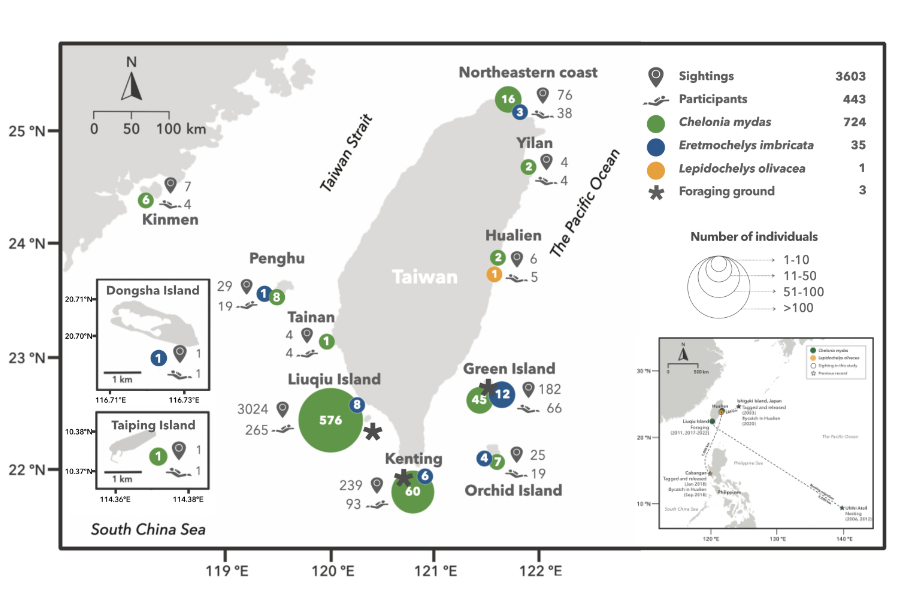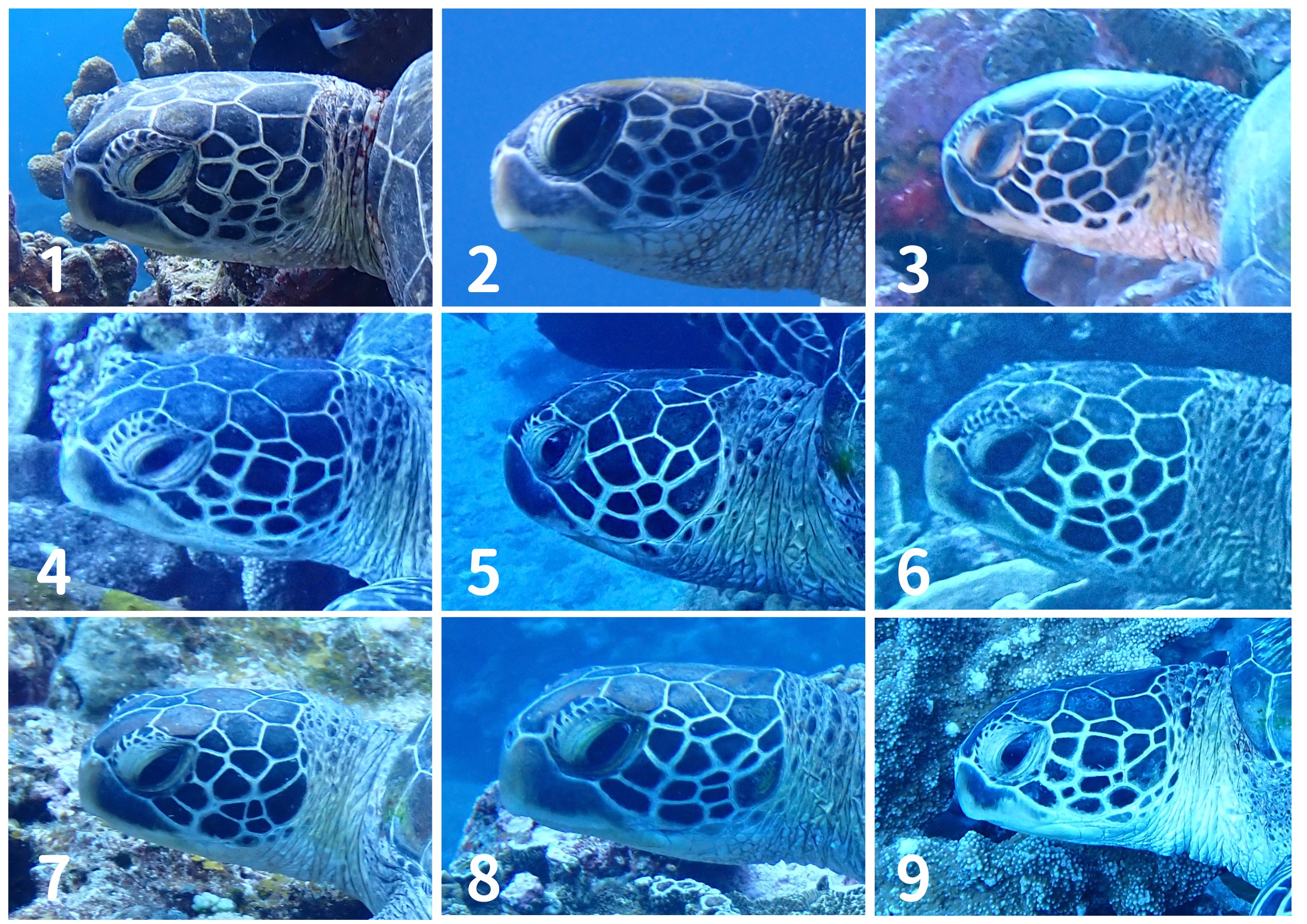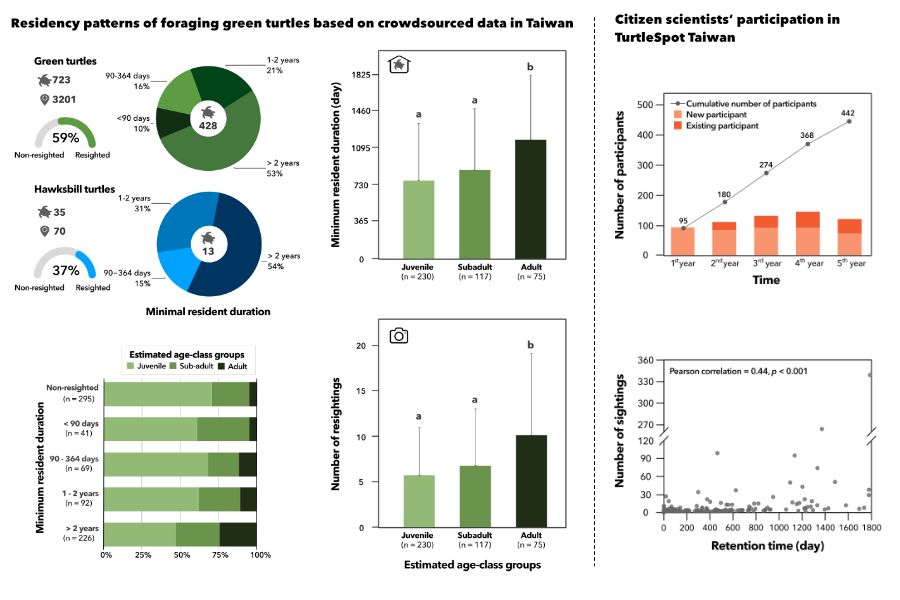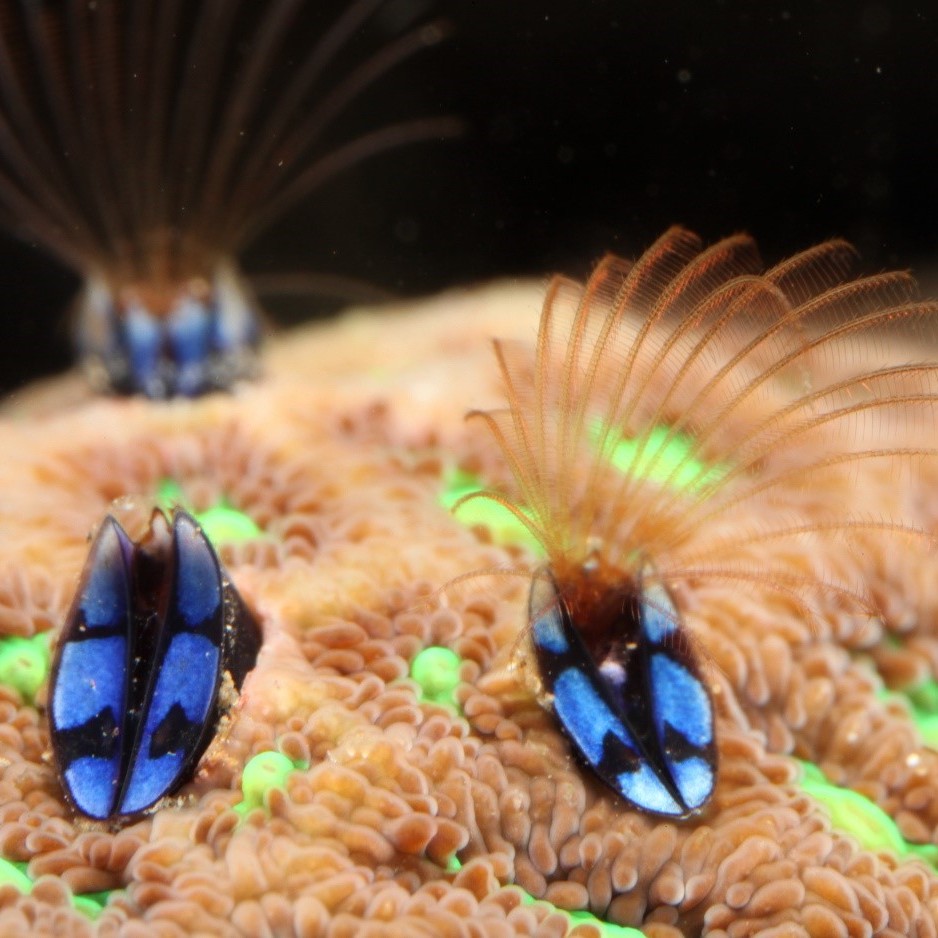
Crowdsourcing Conservation: unveiling Taiwan’s sea turtle foraging grounds, emerging threats, and residency with broad societal engagement
This study analyzed sea turtle sightings from a citizen science project, TurtleSpot Taiwan, to identify Taiwan’s coastal foraging grounds, site fidelity, and threats. Results showed three main green turtle foraging grounds (Liuqiu Island, Kenting, and Green Island), and 43.4% of individuals stayed in the same area for one or more years, with adult-sized turtle residency greater than immature turtles. Moreover, 10% of the sightings involved turtles with fishing line entanglement, ingested debris, missing flippers, or injuries, indicating a significant level of human-turtle disturbance. The project also revealed transboundary movements of flipper-tagged individuals and demonstrated the value of citizen science in long-term ecological monitoring and marine biodiversity conservation.

The density distribution maps for all sea turtle sightings, individual turtles, and participating citizen scientists in Taiwan. The figure in the lower right corner shows the connectivity of sea turtle foraging grounds and nesting sites identified through flipper-tagged recoveries.

Using facial scute patterns to identify turtle individuals. Numbers 4 and 9 are the same turtle. Have you spotted it?

Residency patterns of foraging green turtles based on crowdsourced data in Taiwan and the citizen scientists’ participation in TurtleSpot Taiwan
This study, published on March 24, 2025, in BMC Ecology and Evolution, involved contributions from researchers at Academia Sinica and collaborators from the TurtleSpot Taiwan Association. Authors include Chia-Ling Fong (TIGP Biodiversity Program, Academia Sinica), Dr. Yoko Nozawa and Dr. Daphne Z. Hoh (Biodiversity Research Center, Academia Sinica), along with Huai Su, Peng-Yu Chen, and Chia-Chen Tsai from TurtleSpot Taiwan. Volunteer analysts Hao-Chih Huang, Kelly W. H. Tseng, and Jun-Yi Wu also supported the work. The project was funded by Academia Sinica, the TurtleSpot Taiwan Association, and the Ocean Conservation Administration.
Article link: https://doi.org/10.1186/s12862-025-02354-2





